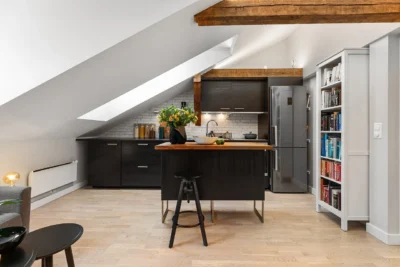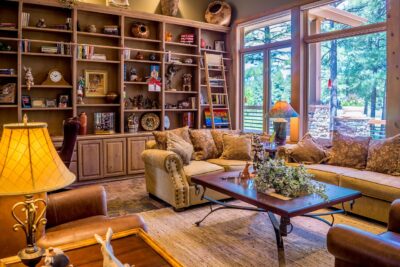
How to Retrofit Old LED Fixtures with Modern Covers
How to Retrofit Old LED Fixtures with Modern Covers By Aman | Updated on April 15th 2025 LED lighting has pretty much taken over the
Home » Adapting Lighting for Multi-Use Spaces
Lighting plays a pivotal role in transforming multi-use spaces into functional and aesthetically pleasing environments. Whether it’s a shared workspace, a home office doubling as a living room, or a retail space with changing needs, proper lighting can define the usability and ambiance of the area. As the demand for versatility in spaces grows, the need for adaptable lighting solutions becomes increasingly essential.
Adaptive lighting ensures that spaces cater to diverse activities while enhancing their aesthetic appeal. This article delves into the fundamentals of multi-use space lighting, explores cutting-edge innovations, and offers insights into creating versatile lighting environments that meet modern needs.

A multi-use space is any environment designed to serve more than one purpose. Examples include a living room that doubles as a home theater, an open-concept office catering to collaborative work and private meetings, or a gym that transitions into an event hall. The goal of such spaces is to maximize functionality without compromising comfort or style.
The adaptability of these spaces introduces specific challenges in lighting design:
Ambient lighting provides the base level of illumination, ensuring the entire space is evenly lit. Recessed lights, chandeliers, or surface-mounted fixtures work well for creating a uniform light spread. It establishes a comfortable brightness level, allowing task or accent lighting to take center stage as needed.
Task lighting is essential for activities requiring precision, such as reading, cooking, or crafting. Examples include desk lamps, under-cabinet lighting, and pendant lights over kitchen islands. Adjustable fixtures with dimming capabilities can adapt to various tasks and user preferences.
Accent lighting highlights architectural features, artwork, or decor. It adds depth and character to multi-functional spaces, directing attention to focal points. Wall sconces, LED strips, or track lighting are popular choices for accentuating design elements.
Incorporating natural light is a sustainable way to brighten spaces. Windows, skylights, and glass partitions maximize daylight, reducing energy consumption. Pairing natural light with sheer curtains or blinds ensures control over intensity and glare.
LED lighting has revolutionized multi-use space lighting with its energy efficiency, longevity, and versatility. Adjustable LEDs allow changes in color temperature and brightness, making them ideal for dynamic spaces.
Smart lighting offers unparalleled convenience and control. Users can adjust light intensity, schedule changes, or switch between presets using apps or voice commands. Smart systems also support energy-saving features like occupancy sensors and daylight harvesting.
The Internet of Things (IoT) integrates lighting systems with other smart devices, enabling coordinated functionality. For instance, lighting can sync with HVAC systems or adjust based on the time of day, optimizing comfort and energy efficiency.
Layering combines ambient, task, and accent lighting to create a versatile lighting environment. This approach allows users to customize illumination based on specific needs, ensuring functional and aesthetic harmony.
Lighting fixtures with adjustable arms, dimming capabilities, or directional beams enhance flexibility. These features are especially useful in spaces that frequently change their layout or purpose.
Color temperature significantly influences mood and functionality. Warm light (2700K-3000K) creates a cozy ambiance, while cooler tones (3500K-5000K) boost focus and productivity. Adaptive fixtures allow users to switch between temperatures as needed.
Lighting design should align with the space’s color scheme, furniture, and decor. For instance, pendant lights can complement a dining table, while uplighting emphasizes architectural features like beams or arches.
Maintaining consistency in fixture styles and finishes ensures a harmonious aesthetic. Matching light covers or diffusers across different fixtures creates visual unity while enhancing functionality. Versatile light covers are particularly effective in achieving this balance.
The future of lighting lies in advanced technologies like tunable white lighting, human-centric designs, and AI-driven automation. These innovations promise even greater adaptability and personalization in lighting solutions.
Sustainability remains a key focus. Energy-efficient LEDs, solar-powered systems, and recyclable materials are shaping the future of eco-friendly lighting. Designing spaces with these elements not only benefits the environment but also reduces operational costs.

Adapting lighting for multi-use spaces is essential to creating environments that are both functional and aesthetically pleasing. By understanding the specific challenges of these spaces and employing advanced technologies like smart lighting and energy-efficient LEDs, it’s possible to achieve a versatile and cohesive lighting design. Incorporating adaptable solutions such as layered lighting and dynamic fixtures ensures that these spaces can seamlessly transition between different uses, enhancing their practicality and appeal.
When designing lighting for multi-use spaces, it’s crucial to consider the quality and design of light covers. Innovative light cover replacements not only improve the lighting’s performance but also contribute to the space’s overall aesthetic. Companies specializing in tailored light cover solutions, such as Fluorolite, play a vital role in providing high-quality, customized options that meet diverse lighting needs.
The best lights for multi-use spaces include dimmable ambient lights, task-specific lighting like desk lamps, and accent lights for added depth and aesthetics. Pairing these with adaptable light covers can further enhance their functionality and design. Fluorolite offers light cover replacements that ensure optimal lighting performance in any setting.
Smart systems enable seamless control of brightness, color, and timing, adapting to activities with ease. They also improve energy efficiency and user convenience.
Energy-efficient LEDs and smart systems reduce electricity usage. Incorporating natural light and dimmable fixtures can further optimize energy consumption.
Layered lighting allows adjustments for various activities. For example, task lighting can focus on work areas, while dimmed ambient lighting sets the mood for relaxation. Businesses offering adaptable light solutions ensure optimal flexibility for such needs.

How to Retrofit Old LED Fixtures with Modern Covers By Aman | Updated on April 15th 2025 LED lighting has pretty much taken over the

How to Prevent Yellowing and Cracks in LED Fixture Lenses By Aman | Updated on April 15th 2025 You’ve probably seen it before—those once-clear LED

How to Choose LED Fixture Lenses for Harsh Industrial Environments By Aman | Updated on April 8th 2025 Ever stepped into a factory or a
"We've Got You Covered" and Trace n'Fax are Registered Trademarks of Fluorolite Plastics, LLC. © 2011-2024 All rights reserved Fluorolite Plastics